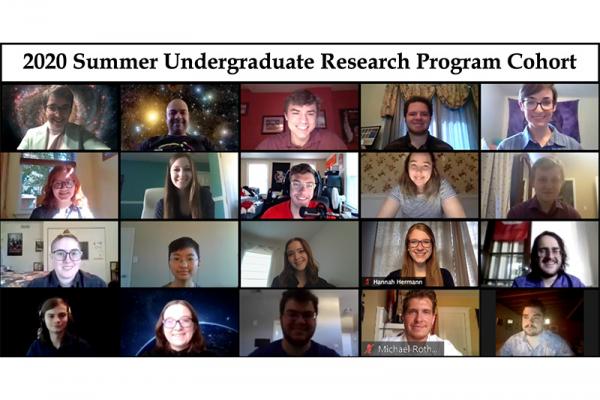August 11, 2020
2020 SURP finishes strong with first online symposium

This summer, the OSU Department of Astronomy hosted 18 students for the Summer Undergraduate Research Program (SURP). These students conducted astronomy research projects that were performed online under the guidance of OSU faculty and post-doctorate mentors. On Tuesday, July 28, they presented their work during our end-of-summer Online Research Symposium!
